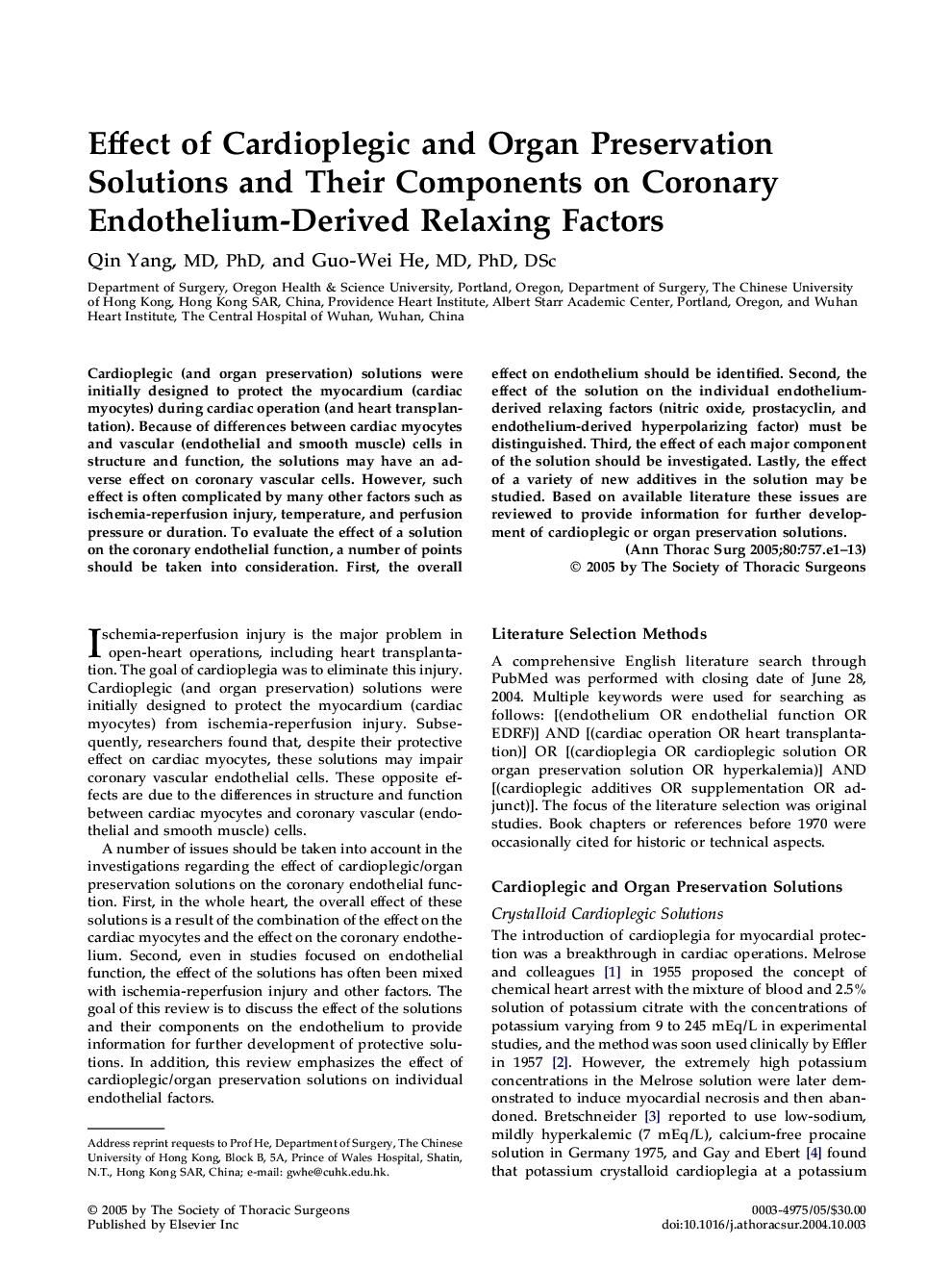| Article ID | Journal | Published Year | Pages | File Type |
|---|---|---|---|---|
| 9945459 | The Annals of Thoracic Surgery | 2005 | 13 Pages |
Abstract
Cardioplegic (and organ preservation) solutions were initially designed to protect the myocardium (cardiac myocytes) during cardiac operation (and heart transplantation). Because of differences between cardiac myocytes and vascular (endothelial and smooth muscle) cells in structure and function, the solutions may have an adverse effect on coronary vascular cells. However, such effect is often complicated by many other factors such as ischemia-reperfusion injury, temperature, and perfusion pressure or duration. To evaluate the effect of a solution on the coronary endothelial function, a number of points should be taken into consideration. First, the overall effect on endothelium should be identified. Second, the effect of the solution on the individual endothelium-derived relaxing factors (nitric oxide, prostacyclin, and endothelium-derived hyperpolarizing factor) must be distinguished. Third, the effect of each major component of the solution should be investigated. Lastly, the effect of a variety of new additives in the solution may be studied. Based on available literature these issues are reviewed to provide information for further development of cardioplegic or organ preservation solutions.
Keywords
NHEnuclear factor κ-BL-NNAEDRFPGI2EDHFNG-nitro-l-arginineHTKKCaNF-κBICAMKATP5-hydroxytryptamineNOS5-HTCOXcGMPCa2+cAMPMg2+Na+cyclooxygenaseepoxyeicosatrienoic acidEETUniversity of WisconsinSodiumendothelium-derived relaxing factorEndothelium-derived hyperpolarizing factorMagnesiumintercellular adhesion moleculeNitric oxidenitric oxide synthaseHistidine-tryptophan-ketoglutaratePotassiumprostacyclinATP-sensitive K+ channelVoltage-gated K+ channelsCalcium
Related Topics
Health Sciences
Medicine and Dentistry
Cardiology and Cardiovascular Medicine
Authors
Qin MD, PhD, Guo-Wei MD, PhD, DSc,
